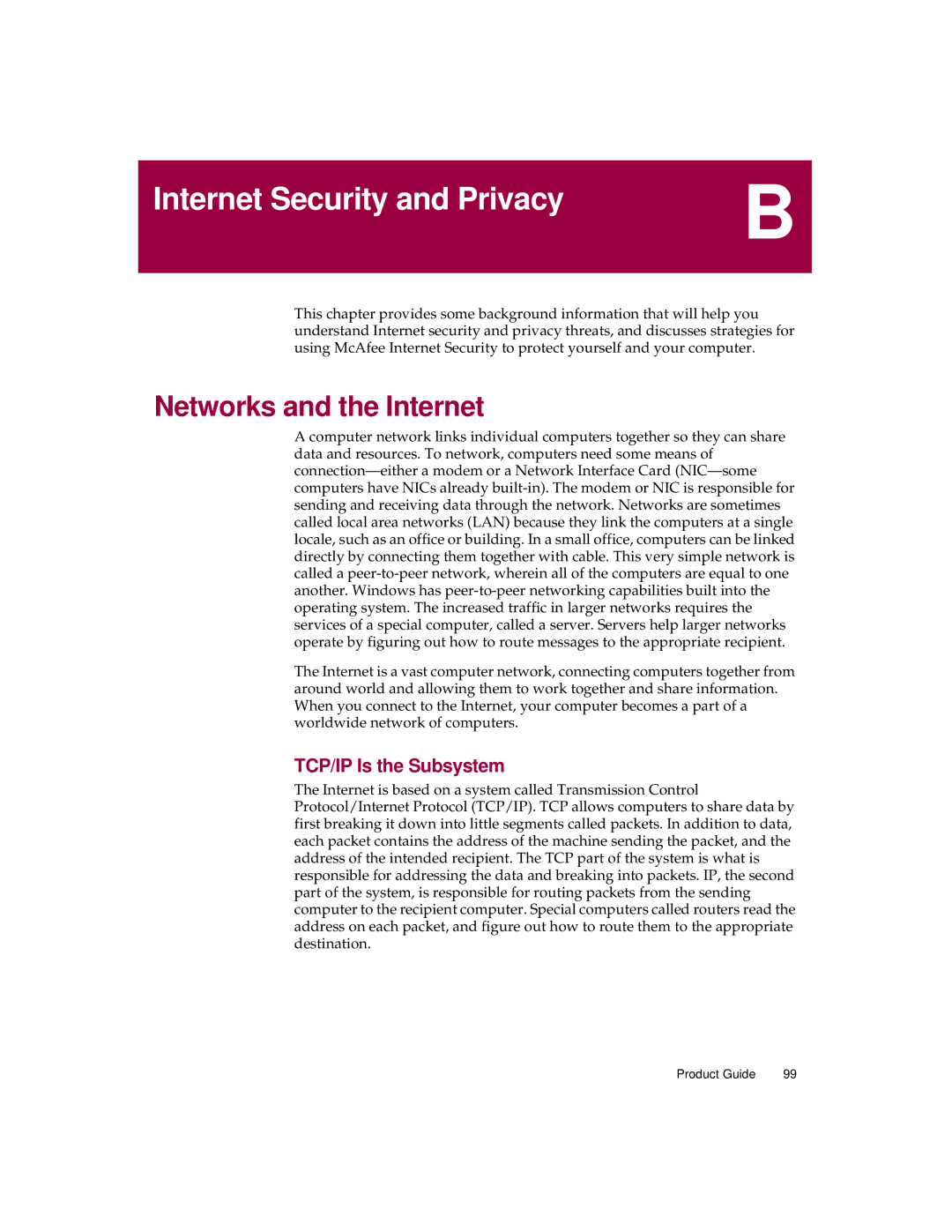
Internet Security and Privacy
B
This chapter provides some background information that will help you understand Internet security and privacy threats, and discusses strategies for using McAfee Internet Security to protect yourself and your computer.
Networks and the Internet
A computer network links individual computers together so they can share data and resources. To network, computers need some means of
The Internet is a vast computer network, connecting computers together from around world and allowing them to work together and share information. When you connect to the Internet, your computer becomes a part of a worldwide network of computers.
TCP/IP Is the Subsystem
The Internet is based on a system called Transmission Control Protocol/Internet Protocol (TCP/IP). TCP allows computers to share data by first breaking it down into little segments called packets. In addition to data, each packet contains the address of the machine sending the packet, and the address of the intended recipient. The TCP part of the system is what is responsible for addressing the data and breaking into packets. IP, the second part of the system, is responsible for routing packets from the sending computer to the recipient computer. Special computers called routers read the address on each packet, and figure out how to route them to the appropriate destination.
Product Guide | 99 |
